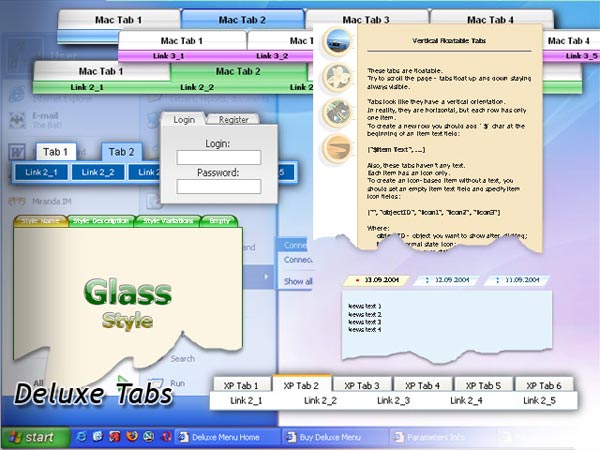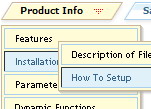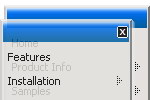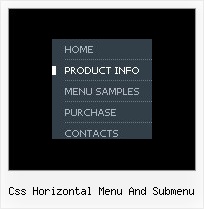Recent Questions
Q: I have set up the dhtml menu javascript at this site. I have chosen to use the transitional filter from IE6. The main menus and sub menus work fine in IE but in Firefox the sub menus do not appear at all. Is their a fix for this. I realize that firefox does not support IE transitions but Ithought the sub menus would appear when the main item is clicked on. that hs not happened. Go to above URL and vie in both IE and Firefox and you will see what I mean.
A: You couldn't see submenus in FF because you had
var transparency="";
You should set your parameters in the following way:
var transparency="100";
var itemBackColor=["#072450",""];
Q: I had just purchased tree menu license. I found that the tree menu is not float when position is set to absolute.
Is it possible to make the position relative and set the floating tree?
A: Tree menu will float with absolute position only:
var tabsolute=1;
Q: I tried to create this html version and it is still not working.
I have saved all of the files in the correct places and what it gives me is just all of the links in a straight line across the top of the page.
I really think it is sitebuilder that is creating the issue with the structure of the head and body tags, but I a am a little new so I may be wrong.
A: You should delete tag from your code.
Please delete the following string from your html page.
<base href="file:///C:/Program%20Files/Yahoo%20SiteBuilder/sites/rainforestanimals/rainforestanimal/test2.html">
Q: I have to pass dynamic value from the link when the user click the mouseover menu.
A: Actually you can use your own Javascript code instead standard links. For example:
var menuItems = [
["text", "javascript:your_code_here"]
];
or
var menuitems = [
["<div onClick='your_code_here'>item text</div>", ""]
];










